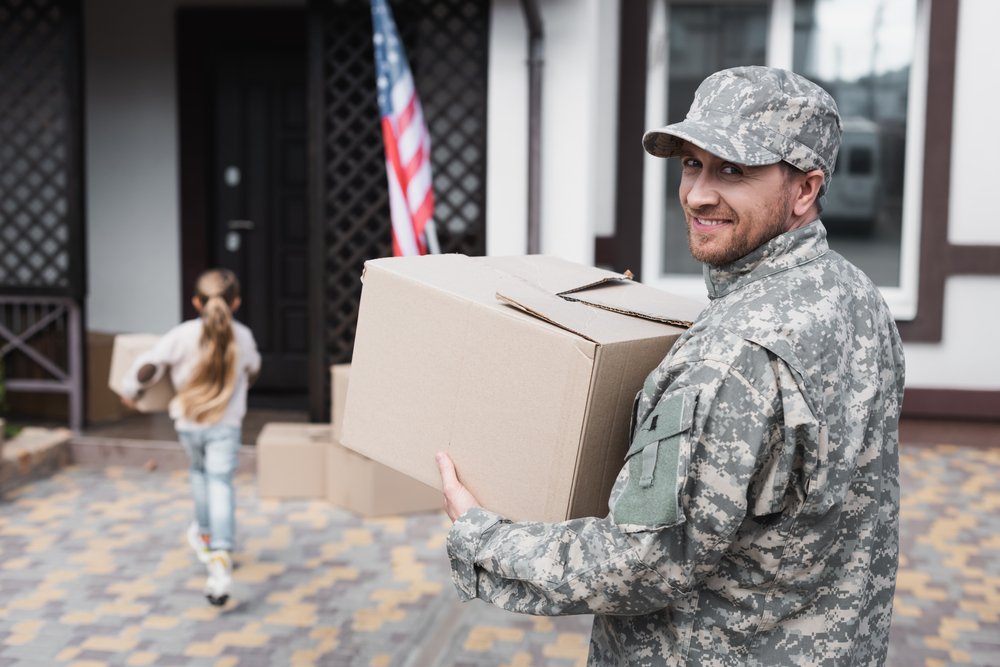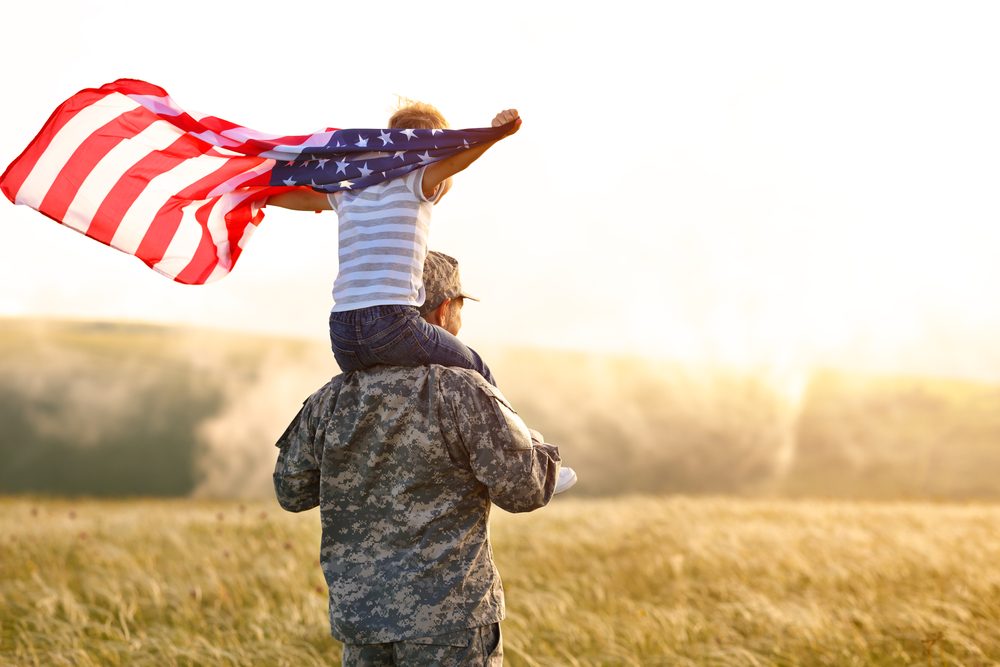Efficiency is the name of the game when you’re packing for a military move.
If you’re in the military, you need to know how to pack quickly as you may be asked to move base or ship out at any time. Even if you’re not in the military, understanding how to pack military style helps you to pack faster and with fewer cases.
Simply put, the military has some packing secrets that can be of use to everyone. In this article, we share the key military packing tips that help you prepare for a smooth military relocation.
Tip No. 1 – Create a Staging Zone
One of the biggest military packing secrets is also one of the simplest:
Practice.
Nobody gets good at packing military style without working on it. You need to pack, unpack, and pack again to ensure you know what you’re doing. The old adage of practice making perfect applies here. Better yet, the more you practice, the easier it is for you to memorize where you’ve placed all of your belongings.
So, how do people in the military practice packing?
They create staging zones.
A staging zone is any clear area that allows you to lay out all of the stuff you need to pack. This allows you to organize your gear so you can think through what you need, check items off your checklist, and develop a sequence for packing. Any flat surface can serve as a staging zone if it’s large enough. A bed, the floor, or even a ping pong table are all ideal. Keep any items you’re not going to pack away from your staging zone. If it doesn’t need to go in the case or bag, it’s just a distraction that makes it harder to organize what you need to pack.
Tip No. 2 – Pack by Room and Season
Packing by room is a simple tip. But simplicity is always at the heart of good organization. Keep your kitchen items together using clever techniques like wrapping your dish towels around your glasses. Keep items from different rooms separate so you know exactly what you have and can easily spot anything that’s missing.
Packing for the season applies more directly to people in the military. Your work may require you to move to a different part of the world, which may have different seasons from the United States. In these cases, you need easy access to clothing to suit the specific season. Packing by the season ensures you can quickly unpack to suit the weather in your new location.
Tip No. 3 – Use the Ranger Rolling Technique
Most people rely on folding or bundling their clothing to fit as much into their bags or cases as possible. But the most efficient method is the army roll packing technique. Also called ranger rolling, it allows you to pack clothes tightly while ensuring they stay wrinkle-free when you’re traveling.
Similar to folding, each type of clothing has a different rolling method.
Rolling Shirts
Follow these army roll packing steps to successfully roll a shirt:
- Lay the shirt out on a flat, clean, and hard surface. It’s tough to roll clothes on a soft surface, like a bed, because your shirts will sag and potentially wrinkle.
- Place your hands at the center of the shirt and slowly swipe them out to smooth any wrinkles.
- Fold the shirt’s hem inside out by about three inches. This creates a small cuff. Then, rotate the shirt so that the collar faces you.
- Fold the sleeves into the center of the shirt and you should form a rectangle. If the shirt has long sleeves, cross them over in an “X” shape.
- Now, you’re ready to start rolling. Fold the collar about an inch into the shirt and smooth it out. Repeat this process, going an inch at a time and smoothing each fold. This creates a tightly rolled shirt that doesn’t have wrinkles.
- Tuck the edges into the rolled shirt to create a tight little bundle.
Rolling Pants
Army roll packing applies to pants as much as it does to shirts. But you need a different technique to roll pants properly.
- Fasten all of the buttons and zippers in the pants before laying them flat on a hard surface.
- Smooth out any wrinkles using your hands.
- Create a cuff by flipping the waistband in by about four inches.
- Fold the pants in half so one leg sits over the other to form a straight line. Smooth the pants using your hands before you start rolling.
- Starting from the ankles of the pants, fold up by about an inch. Smooth out the fold before repeating, going an inch at a time and smoothing between each roll. Keep going until you reach the cuff.
Tip No. 4 – Create an Army Bag Packing List
This tip will focus specifically on what somebody heading out for army basic training should pack into their duffle bag. However, it can also serve as a basic checklist for anybody who’s packing for a short-term relocation. Alternatively, it can help you pack a bag that contains the items you’ll need immediately after moving into your new home.
Think of this list as a quick guide on how to pack military duffle bag or case.
Clothing
Function goes ahead of style when packing clothes. The following are the key items you need to pack for basic training or a short-term relocation:
- A single set of comfortable casual cloths
- At least one pair of calf-length athletic socks
- Three pairs of white underwear
- One pair of comfortable shoes
You can also add a pair of spectacles to this list if you need them.
Toiletries
While those heading to basic training can purchase toiletries at the post exchange, it’s always a good idea to pack what you need to cover a few weeks.
- A toothbrush with a case
- Comb or hairbrush
- Disposable razors and shaving cream
- Dental floss
- Antiperspirant
- A washcloth and towel
- Shower shoes
- Soap in a soap case
The Extra Stuff
Assuming you’re moving for military reasons, it’s a good idea to bring a copy of your orders along with key identification documents. These include your Social Security card, a valid driver’s license, and certified copies of the birth certificates for you and any spouses or dependents.
It’s also a good idea to bring a combination lock so you can secure your belongings, along with $50 in cash to make small purchases.
This basic packing list covers what somebody would need for army basic training. Plus, it serves as a good basis for a short-term relocation or as a simple checklist if you’re packing individual bags during a house move.
Tip No. 5 – Pack in Reverse Order
One of the key military packing tips is to pack items in the order that you’re going to need them. Assuming you’ve set up a staging zone, you should be able to see every item you’re going to pack. The item you anticipate using last is the first that goes into your bag, and the item you’ll need right away goes at the top.
This is one of those clever packing secrets that ensure you don’t have to go digging through your bags when you need something important. A little preparation goes a long way with packing.
Tip No. 6 – Use the Wall Strategy
Having a specific strategy fits well with a list of military packing tips. After all, the military is all about strategy during operations, and packing should be no different.
The wall strategy is ideal for packing.
The idea here is to think about packing as though you’re building a wall. Some of your items act as your bricks, with the rest serving as the mortar that goes between them and holds everything together.
In the case of packing, items like small bags and shoes act as your bricks. They can’t be folded or manipulated too much, meaning they need to be slotted into place first. Once the bricks are in place, your underwear, clothes, and pants serve as the mortar that goes in between the bricks.
This strategy serves two purposes.
First, it allows you to maximize the space in your bag or case. If you’re using the rolling techniques mentioned earlier, it’s also one of the best packing secrets to make sure all of your important clothes fit into a single bag.
Second, the wall strategy ensures items can’t shift during transit. As a result, the contents of your bag will look just as neat as when you packed them.
As a side note, this strategy works when you’re packing household items too. For example, you can treat kitchenware as bricks, using dishcloths, sponges, and similar items as the mortar when packing your kitchen items.
Tip No. 7 – Bags Inside Bags
Organization is key to most military packing tips. Just dumping everything you own into a few big bags isn’t going to get the job done. You’ll end up scrambling through all of the bags to find what you need. Furthermore, this haphazard approach can lead to important items getting damaged during transit.
Instead, use smaller bags that you pack into your large bags.
For example, you can use small Ziploc pouches or zippered cloth bags to store your toiletries, electronics, and small items. If you want to stick with how to pack military style, it’s also a good idea to have a “go bag” that sits on top of everything else in your larger bag. This “go bag” contains everything you’ll need if you have to get on the move quickly, including some toiletries, clothes, any important electronics, and documents.
Bags inside bags help you to stay organized. Your smaller bags can serve as the bricks for the wall strategy mentioned earlier.
Tip No. 8 – Create a Photo Library
Rapid upheavals may lead to the loss of important items. The problem here is that it may be weeks, or even months, before you realize you’ve lost something. This usually occurs if you don’t need an item for a while after packing and fail to identify the loss during the unpacking process.
Checklists, like the army bag packing list shared earlier, help you to keep on top of what you need to bring.
But it also helps to maintain a photo library of the items you’re packing. For example, you can take photos of your staging zone before you start packing so you can see what items go into each bag. Name each photo and tag the appropriate bag with the same name so you know exactly what it’s supposed to contain. When unpacking, compare what’s in the bag to what’s in the related photo. This is a quick way to make sure nothing gets lost in transit. Plus, it gives you visual cues that may highlight items you’ve forgotten to pack.
Get Packed Military Style
Whether you’re preparing for a military move or you just want to complete a house move with military precision, these packing secrets make you more efficient. With these tips, you ensure that you pack everything you need and require as few bags as possible. Some of these packing secrets, such as the wall strategy, also help you to secure your items during transit.
Of course, packing is only the first stage of any military move. Once you’re packed, you need a reliable service that helps you move your family and belongings from Point A to Point B.
That’s where Military Movers comes in.
We specialize in helping military personnel move domestically and overseas. Along with our partners at A1 Auto Transport, we provide an expert level of service designed to make your move as seamless as possible.
We’ve shown you how to pack military style.
Now, let us help you move with military precision. If you’d like to know more about our services, call us at 866-226-1441 or get a quote from our team online.






